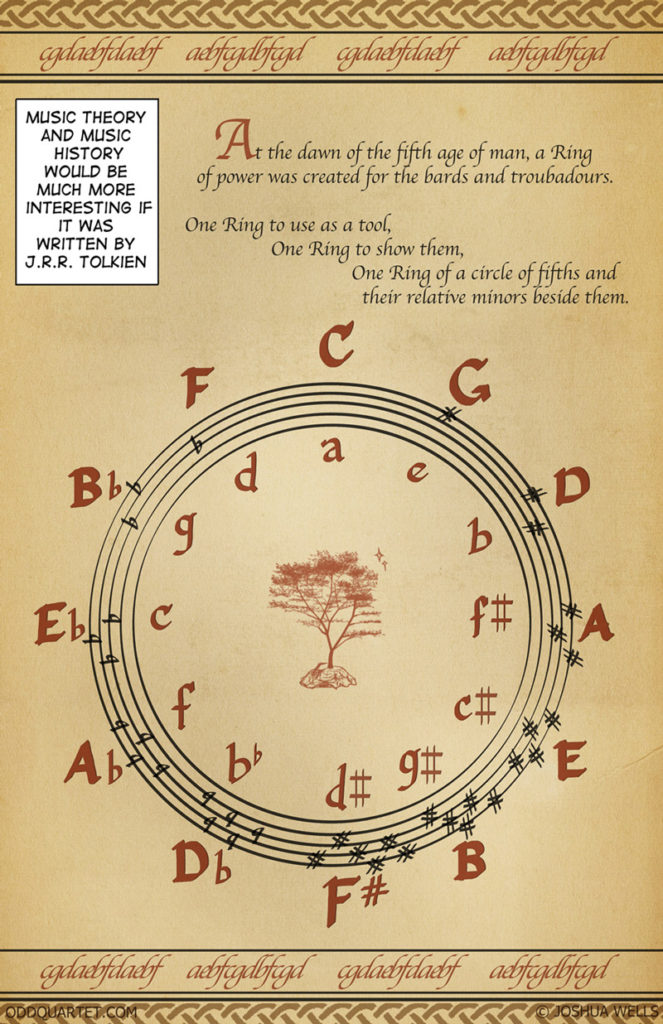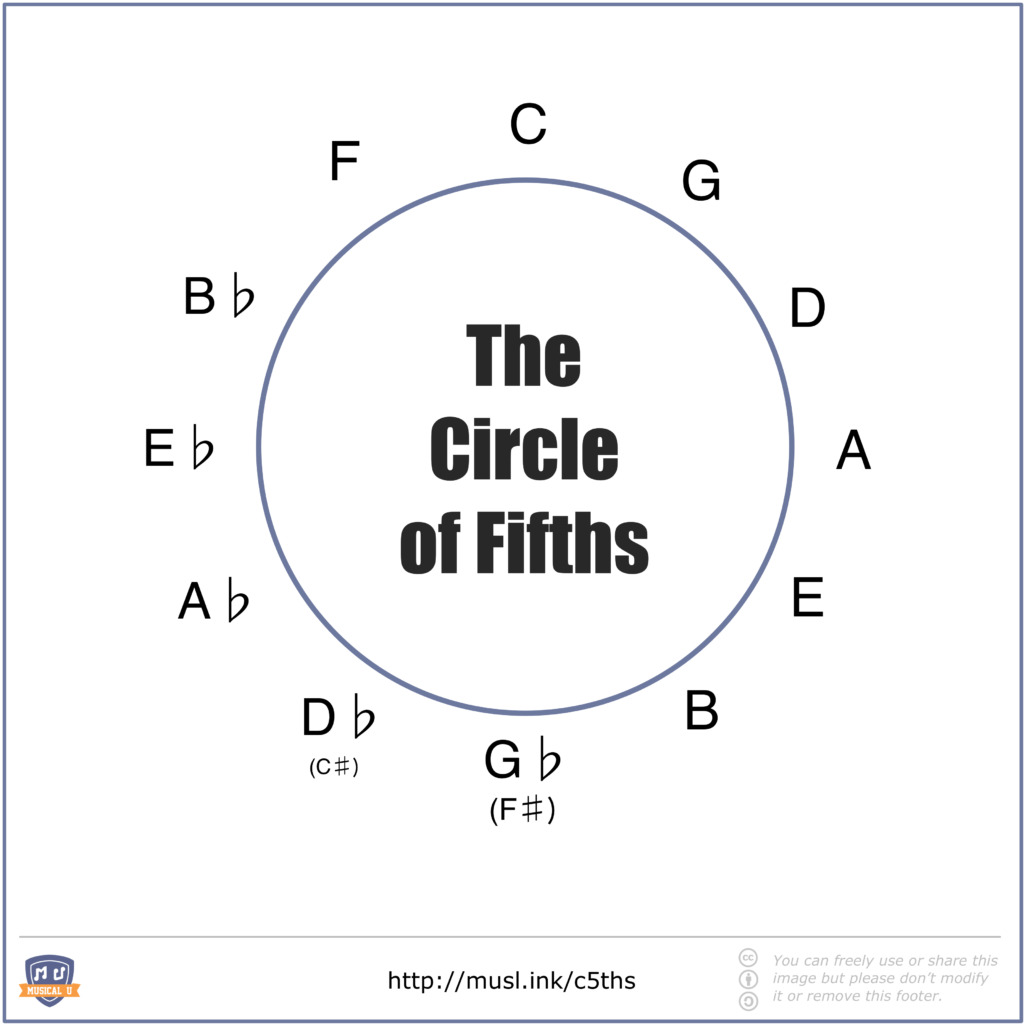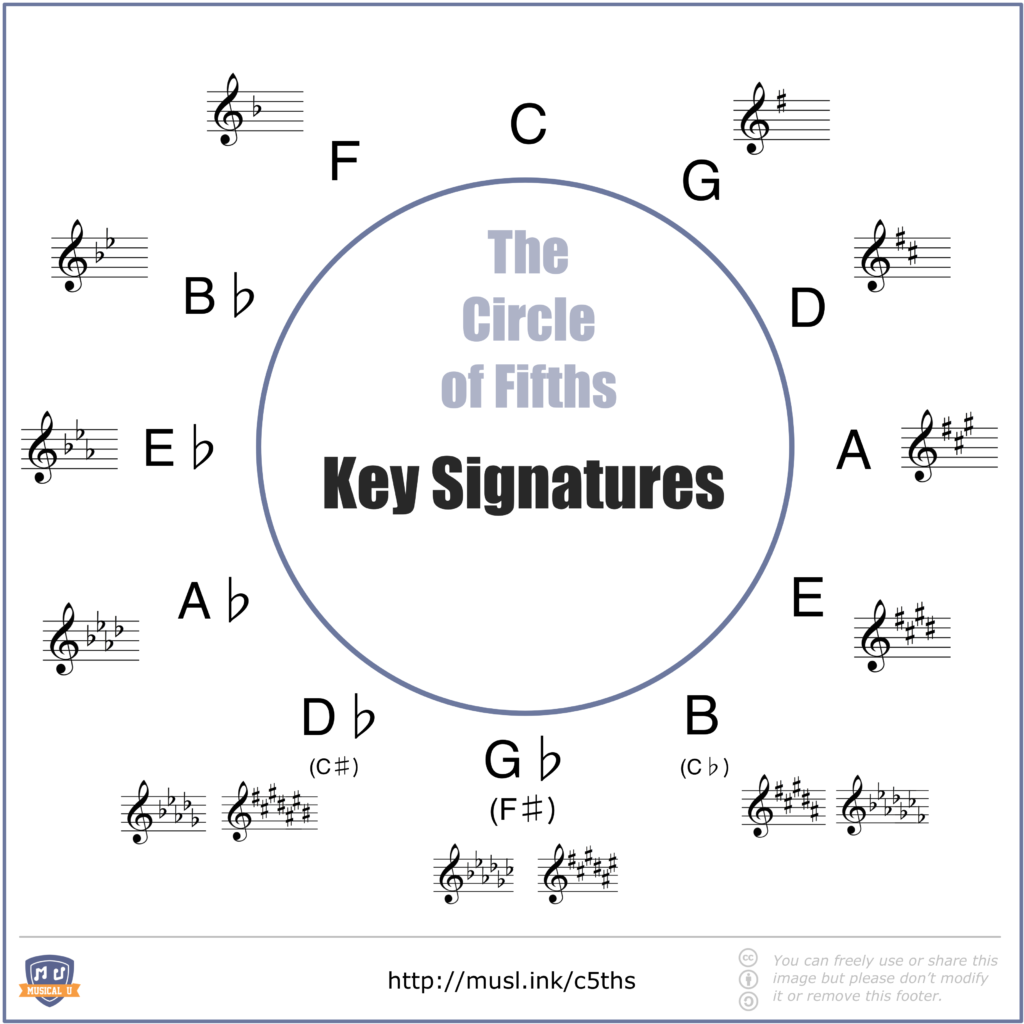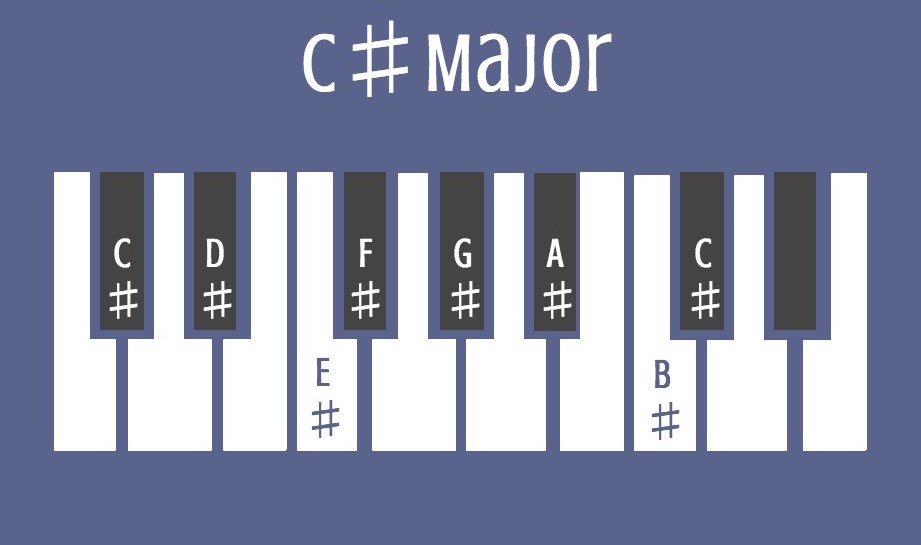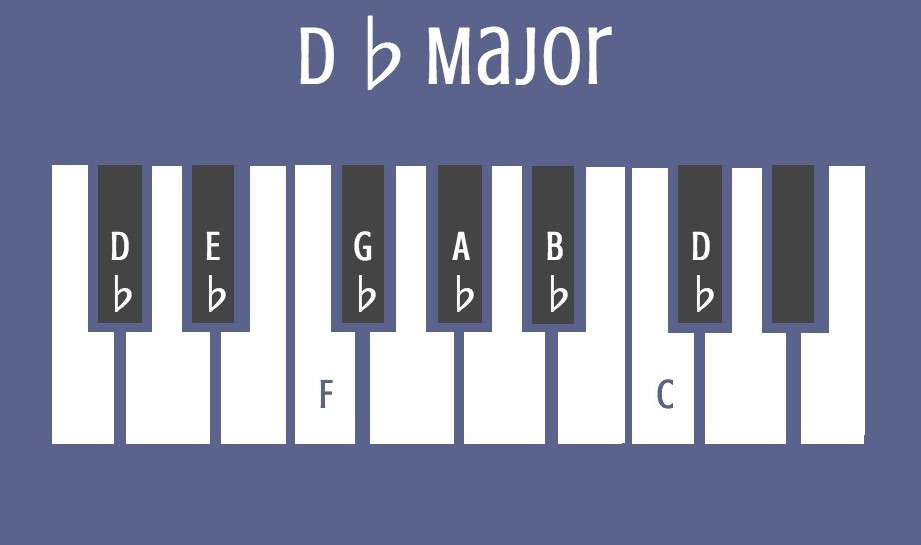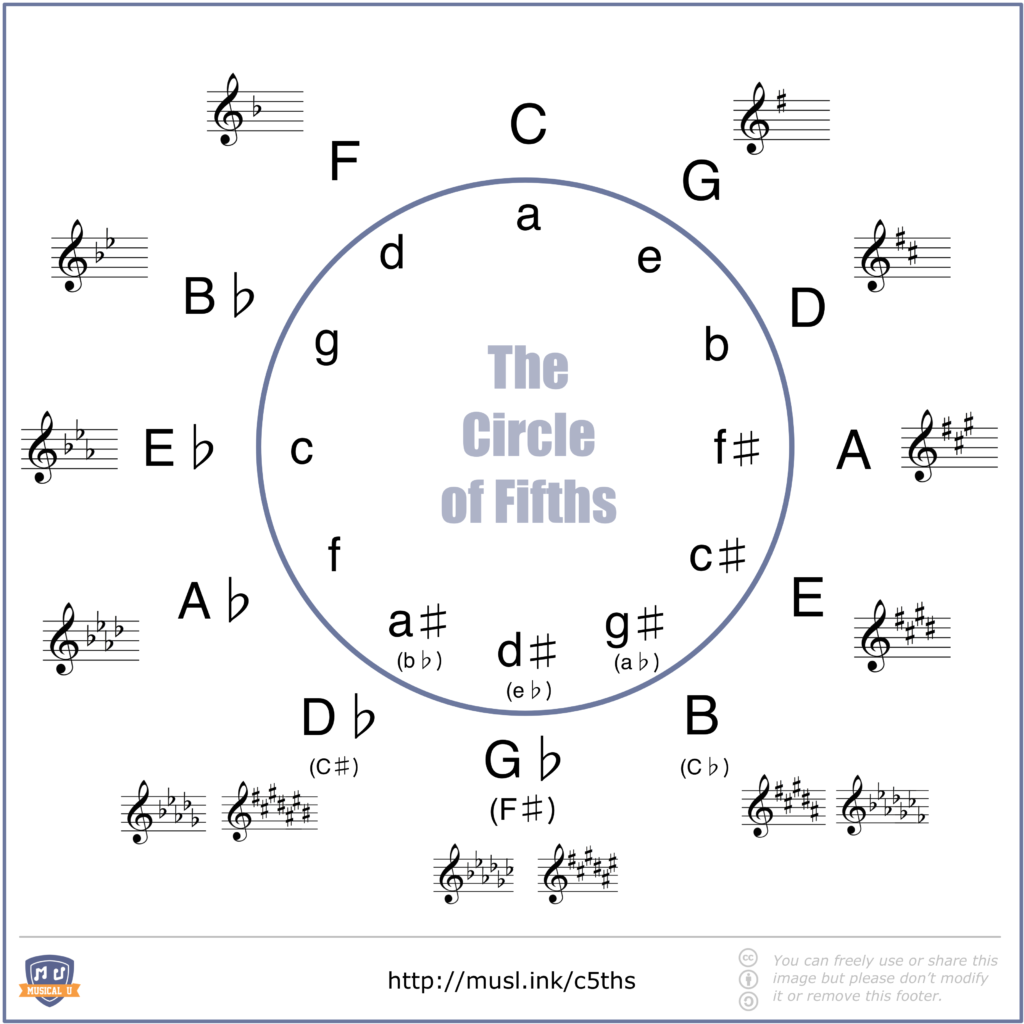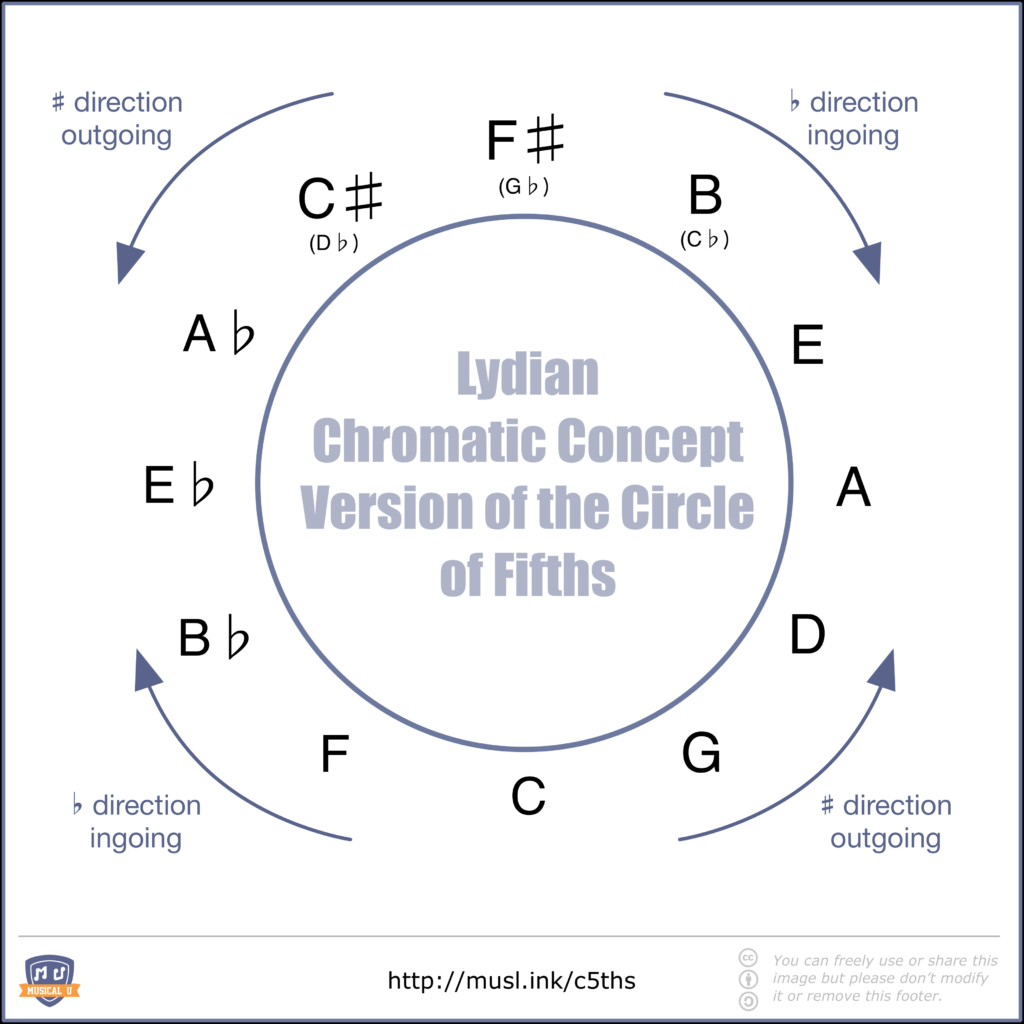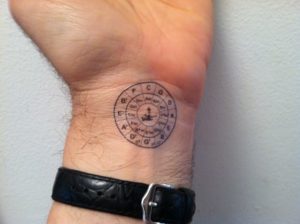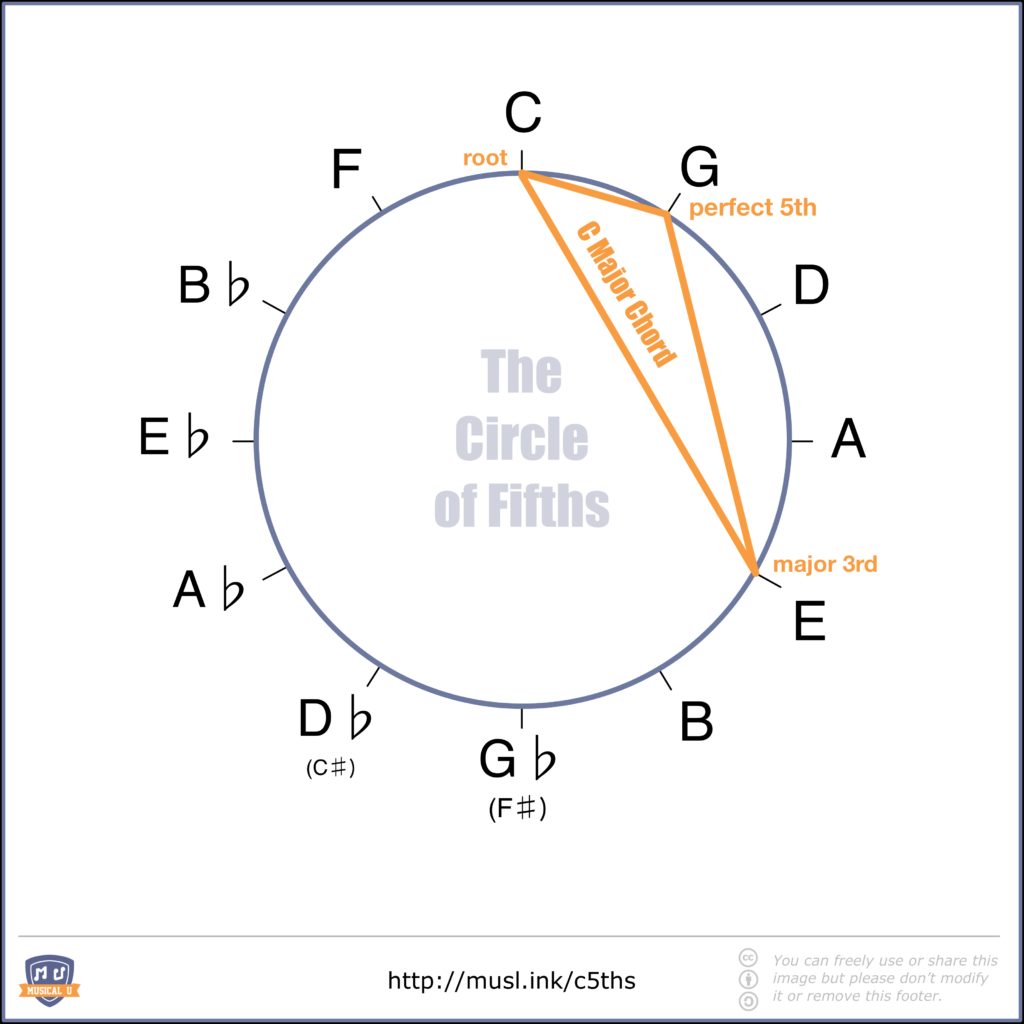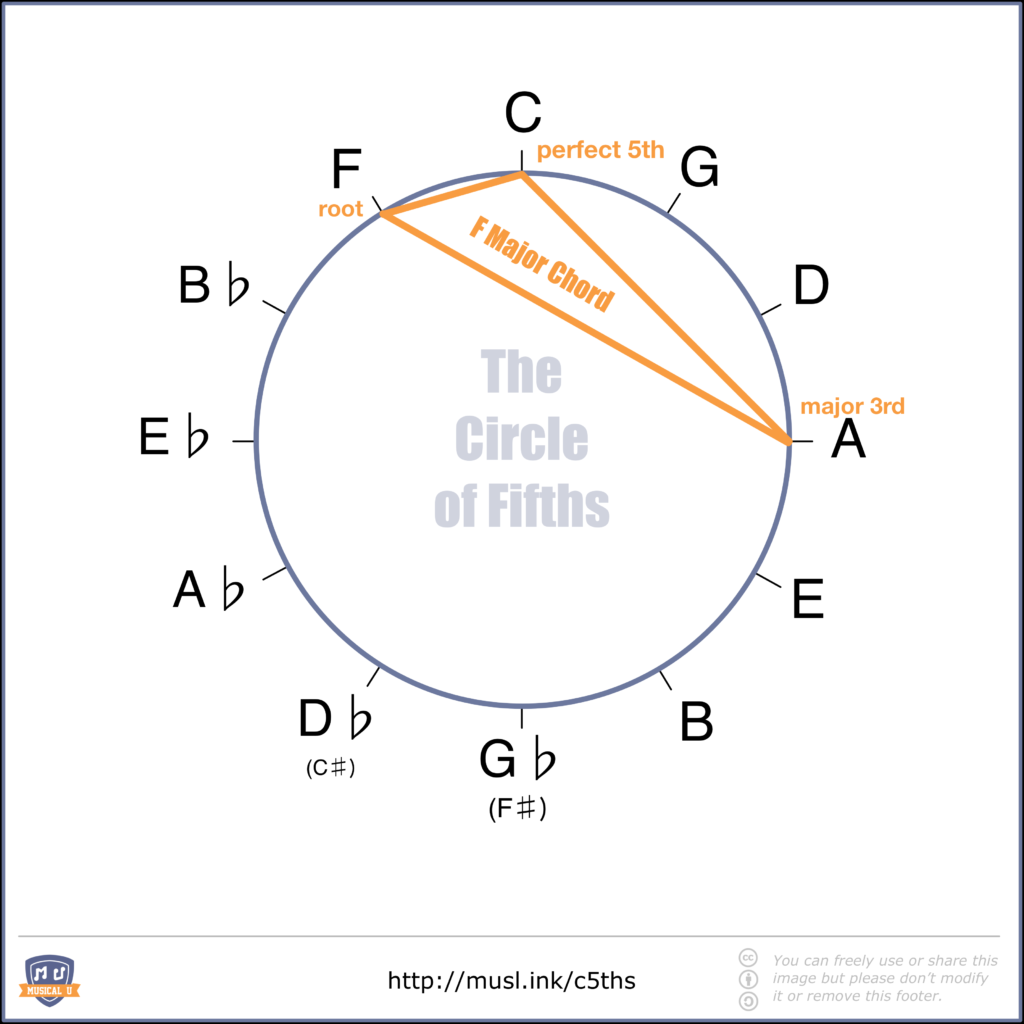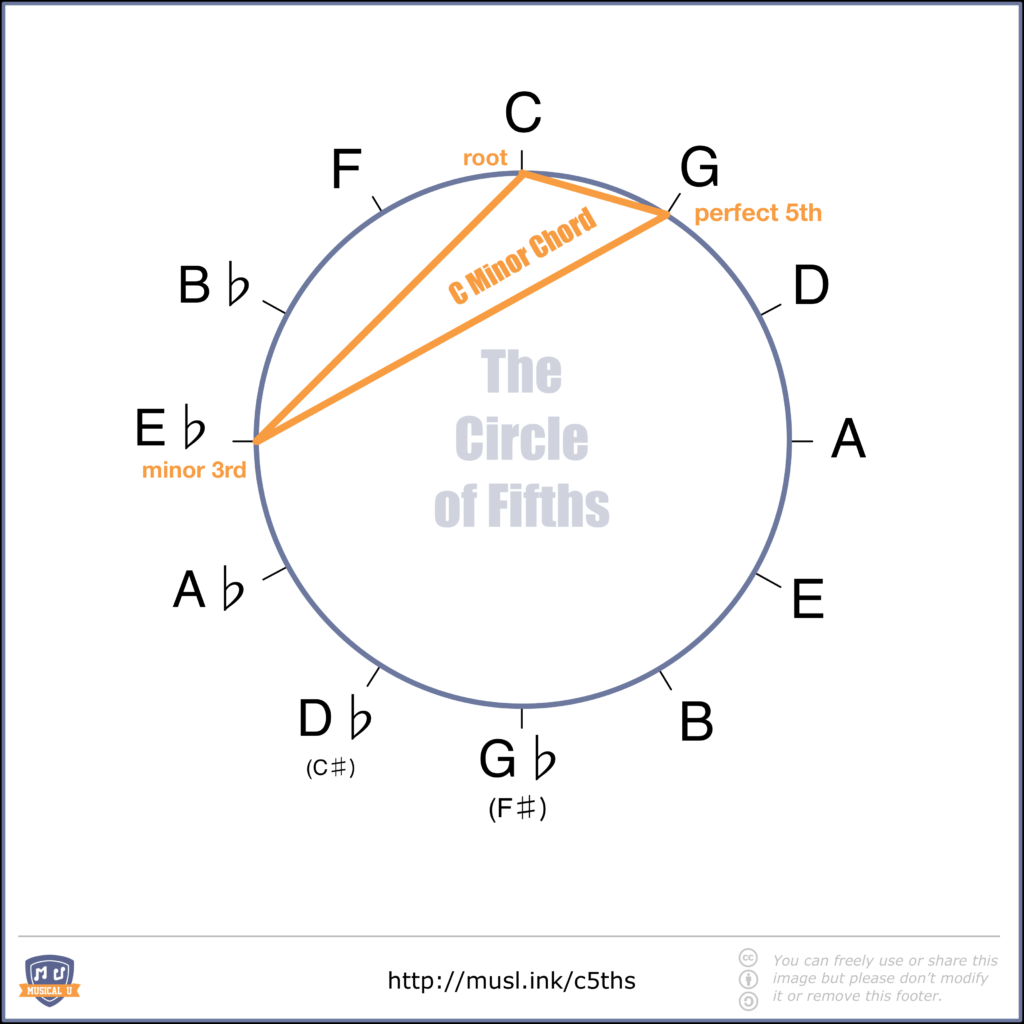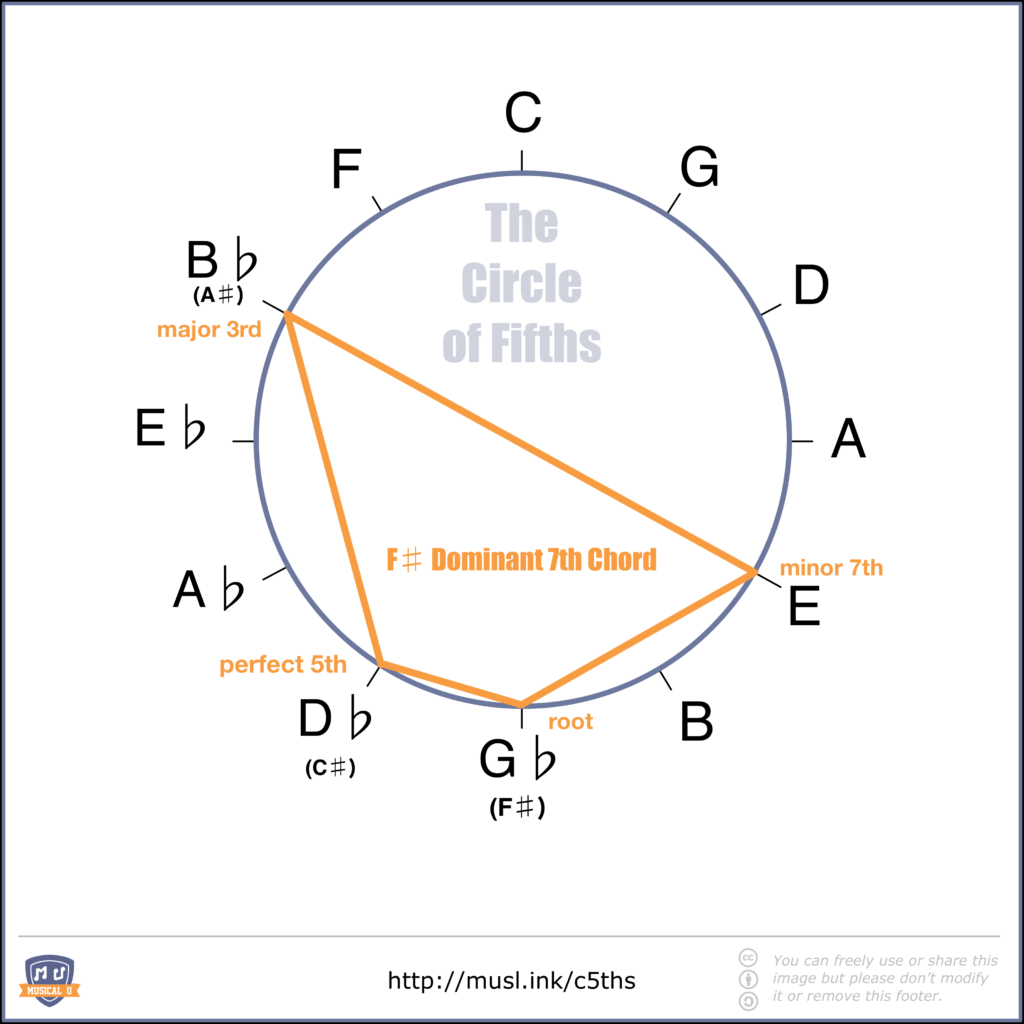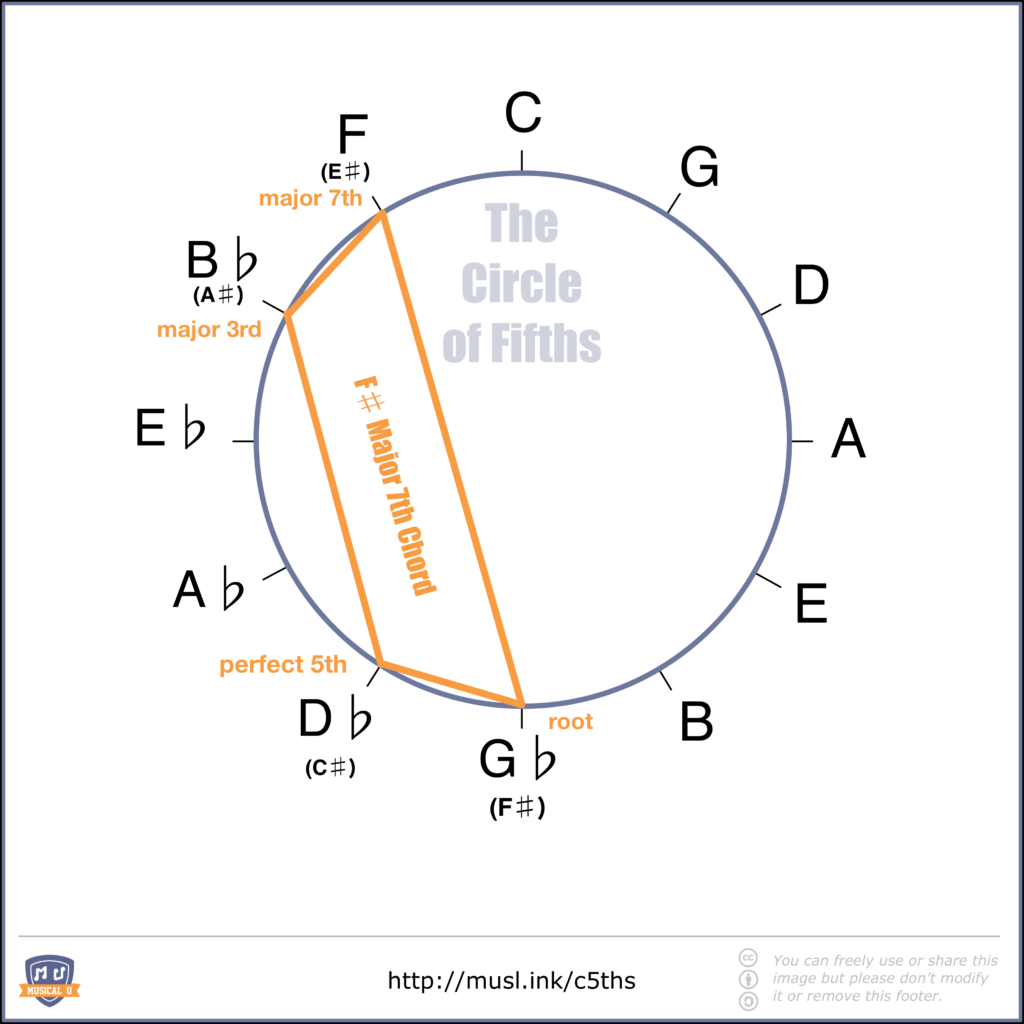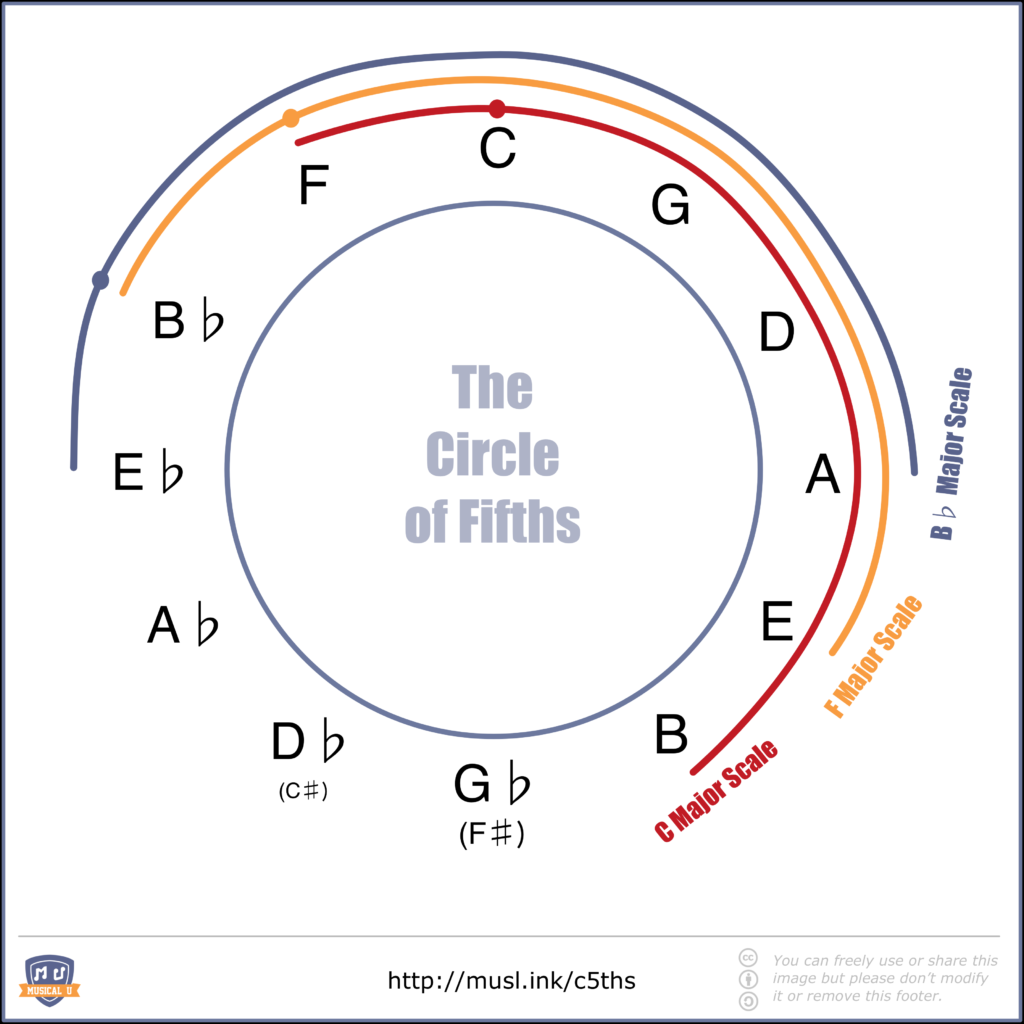https://www.musical-u.com/learn/how-long-does-it-take-to-play-a-song-by-ear/
How long it takes a musician to be able to play a song by ear will vary. Although many great musicians do find it easy to quickly play songs by ear, there are many more who found it difficult and had to practice before they could do it quickly. https://www.musical-u.com/learn/how-long-does-it-take-to-play-a-song-by-ear/
How to Find the Tonic of Any Song in Major
New musicality video:
One of the most important skills you can learn with ear training is how to find the tonic of a given song or composition.
https://www.musical-u.com/learn/how-to-find-the-tonic-of-any-song-in-a-major-key/
The tonic gives you information about how the music is organized, and tells you what chords it is likely rooted in. Also, if you get lost in a song and can’t understand what’s going on musically, using the tonic as a point of reference can help get you back on track!
Finding the tonic in sheet music is a fairly straightforward process; you have all the notes written out for you, and a key signature to help you out even further. But what if you don’t have sheet music? What about finding the tonic by ear?
Like any musical skill, being able to determine the tonic of any composition takes practice, practice, practice! Take the opportunity to closely listen for the tonic in every song you can, and soon enough, it will become second nature.
Ear training, and particularly interval ear training will definitely speed up this learning process; understanding the relationship that the tonic has with other notes in terms of pitch will go a long way in helping you develop the skill of tonic identification!
https://www.musical-u.com/learn/how-to-find-the-tonic-of-any-song-in-a-major-key/
===============================================
Learn more about Musical U!
Website:
https://www.musical-u.com/
Tone Deaf Test:
http://tonedeaftest.com/
Musicality Checklist:
https://www.musical-u.com/mcl-musicality-checklist
Facebook:
https://www.facebook.com/MusicalU
Twitter:
Tweets by MusicalU
YouTube:
https://www.youtube.com/c/MusicalU
Subscribe for more videos from Musical U!
Today we’ll begin by talking about recognising individual…
https://www.musical-u.com/learn/chord-ear-training-101-2/
Today we’ll begin by talking about recognising individual chords and then move on to sequences of chords, known as chord progressions. Read on to discover how you can learn to play chords by ear. https://www.musical-u.com/learn/chord-ear-training-101-2/
Musical U Meets Music Launch Hub, Part 1: Practicing Music, Practicing Business
TagsAh, the age old question! Just what do music and business have to do with each other? Quite a bit, it turns out. When Musical U founder Christopher Sutton recently appeared live on Steve Palfreyman’s Music Launch Hub – Mastermind Tribe, they discovered a lot of common ground between the best approaches for musicians to take when practicing, and when working on the business side.
The Facebook group Music Launch Hub represents a vibrant community of musicians and bands that are out there helping each other to make it happen. Members of this growing Mastermind Tribe work with each other on everything from the musical nitty-gritty to large scale sophisticated marketing campaigns.
So many musicians assume that they know how and what to practice, but wonder why they’re not getting the results they desire. In this installment, Christopher answered the community’s questions about the best practicing mindset for optimum musical growth:
Steve: Beth finds it tough to focus when she’s practicing. In terms of figuring out how to create a good practice schedule, what would you suggest is the best way to actually be able to sit down and get a good, productive session in – and not just want to get up after five minutes?
Christopher: First off, it’s just great to ask this question because there’s a lot of musicians that don’t give any thought to how they practice. Maybe they’ve been learning with a music teacher. They get their homework each week and that’s basically all they do and they feel satisfied if they check the boxes.
 As you well know, Steve, there’s more to it than that. You’ve got to think through a bit more about what you’re trying to accomplish and how to get there.
As you well know, Steve, there’s more to it than that. You’ve got to think through a bit more about what you’re trying to accomplish and how to get there.
I’m coming at this from maybe a different perspective from a lot of music teachers and a lot of musicians who’ve learned in the traditional way. For me, this was a discovery – that I could take responsibility for my music practice in this way.
I’d love to unpack this into a few pieces because it’s just such a big question. One area is about time: “When should you practice music? How do you schedule it into your day? How much time do you need?”
Another area is about what you should be using that time for: “What are the important things to cover in your practice time? How can you make sure the time that you do have is really effective and is going to give the best bang for your buck?”
When to Practice
To dig into the first of those: once they get past school, a lot of musicians really struggle to find time for music.
I think a lot of people in your community are in this situation where music may be more than a hobby – maybe they’re doing it on a part time basis or they’re earning some money with it. But it still has to exist alongside a lot of other interests and responsibilities.
Three Practice Time Tips
In our community at Musical U we have a lot of people coming to it as adults. They might have kids. They might have a nine to five job. And so that time is really precious and it can be hard to make sure you really protect it, and you guard it, and you actually get it done each day.
1. Ambition is Overrated
So I have a few tips I give for this. First off, just don’t be too ambitious with it.

You know, as far as music is concerned, it’s much better to set aside 15 minutes a day and do it every day than to try to set aside four hours on the weekend to do a mammoth session.
A little and often works much better than kind of big bursts of enthusiasm and finding the time and then two weeks pass and nothing happens. So try to be consistent rather than too ambitious with how much time you set aside.
2. Appointment with Music
Another thing that has helped a lot of our members is the idea of music time where you give it that label and you say “Look, from six until six-thirty is music time. That’s that. I’m going to be there every day.” It’s an appointment – like you’d treat a dentist appointment or requirement that you pick your kids up from school. Six to six-thirty is music time and that’s that. For some people that works great and it gives them that sort of rigidity to bother making it happen each day.
For other people their schedule is wacky and every day is different – so that’s just not realistic.
3. Make it Happen
So for these folks, the strategy is to accept that it’s just going to happen when it happens. You know it might be first thing in the morning because you’re going to be waiting for your ride share and you’ve got the time to spare, or you might be doing ear training on your phone while waiting for the bus. Or you might find that the day flies by and you’ve got to do it at 11 pm before you go to bed.
But you still have that determination. I will carve out my 15 minutes and I will do it everyday.
Some combination of those tactics tends to help people find the time on a consistent basis. Hopefully that covers when to do it and how much to do it.
 Q: I think that’s really cool because when I’m talking to artists about how to find time for the business side, a lot of the conversation is around “Hey make sure you’ve got time for your music first and then also commit some time for the business stuff but don’t make it 50-50. Make it like here’s a bit of business stuff. Make sure the stuff that you love doing is the most important piece.” We’re talking about similar things on different sides – it’s about blocking off those little bits of time. Makes all the difference, Aye?
Q: I think that’s really cool because when I’m talking to artists about how to find time for the business side, a lot of the conversation is around “Hey make sure you’ve got time for your music first and then also commit some time for the business stuff but don’t make it 50-50. Make it like here’s a bit of business stuff. Make sure the stuff that you love doing is the most important piece.” We’re talking about similar things on different sides – it’s about blocking off those little bits of time. Makes all the difference, Aye?
For sure and you’ve touched on something important, which is “What should you be practicing? Why is that passion, that energy, that enthusiasm is so important?”
How to Practice
If you find yourself in the situation where you’re not finding time for music, one of the first things to ask yourself is, “Am I lacking the enthusiasm to make it happen?” Because if you’re super bored with your repertoire, if you’re practicing scales for hours on end and have no interest in that, you’re not going to find the time to practice, right?
Be Honest with Yourself – and Make it Fun
You’re going to find time for things you actually enjoy. And that’s the reality of it.
So it is essential when you’re planning what to practice, that you honestly answer these kinds of questions: “What do I enjoy practicing? What is it about music that gets me pumped up? What’s going to make me look forward to that fifteen minutes each day rather than dreading it and feeling that it’s an obligation?”

Q: Absolutely. I remember when I was younger and gung ho about practicing. My teacher would always give me things that I enjoyed doing but also things that were super hard.
This is linking back to Beth’s question: she was wondering, “Do you put in x amount of time for scales or technique,” and so on. The interesting lesson here – looking back at when I was doing those scales – is that at the time I thought I was learning scales, but now I realize I was learning to overcome resistance. To sit there and work and work and work and achieve a goal and keep going and keep going and keep going.
So he taught me the advantage of feeling that discomfort and then achieving something. How often should we be getting uncomfortable in the stuff that we practice? What do you find works for people?
That’s a great question. So this is a big part of the “how do you get more from your practice time” question because you’ve basically got a spectrum. You’ve got just sitting down and playing your instrument for fun, that you enjoy a 100%, but, realistically, is not going to really improve anything… And so that’s one end of the spectrum where it’s a lot of fun but not very productive, not very helpful.
Challenge Yourself
But on the exact opposite end of the spectrum, you have the kind of serious hardcore technique work that almost doesn’t feel like music but you trust that it is making you a better musician. And the enjoyment factor is probably zero – but it is going to make you a better musician tomorrow than you were yesterday.

Deliberate Practice
The main advice I give on this front is to try and nudge yourself toward that end of the spectrum. On the more uncomfortable end, there’s a concept called deliberate practice. There’s a formal scientific definition about the four things that make practice deliberate rather than just generally practicing. But the very loose definition is that deliberate practice means forcing yourself to spend practice time on the things you find most difficult.
To give a concrete example, let’s say I am learning to play “Let It Be” on the guitar. I can sit down and play through the song and maybe I’ll stumble in parts and there are bits that I find easy and I always struggle with that F bar-chord or whatever the case may be. If I just sit down and play it three times and call that a practice session, that’s okay. I’ll probably improve if I do the same thing day after day, I’ll get over those rough spots and eventually I’ll be able to play it fluidly without any problems.
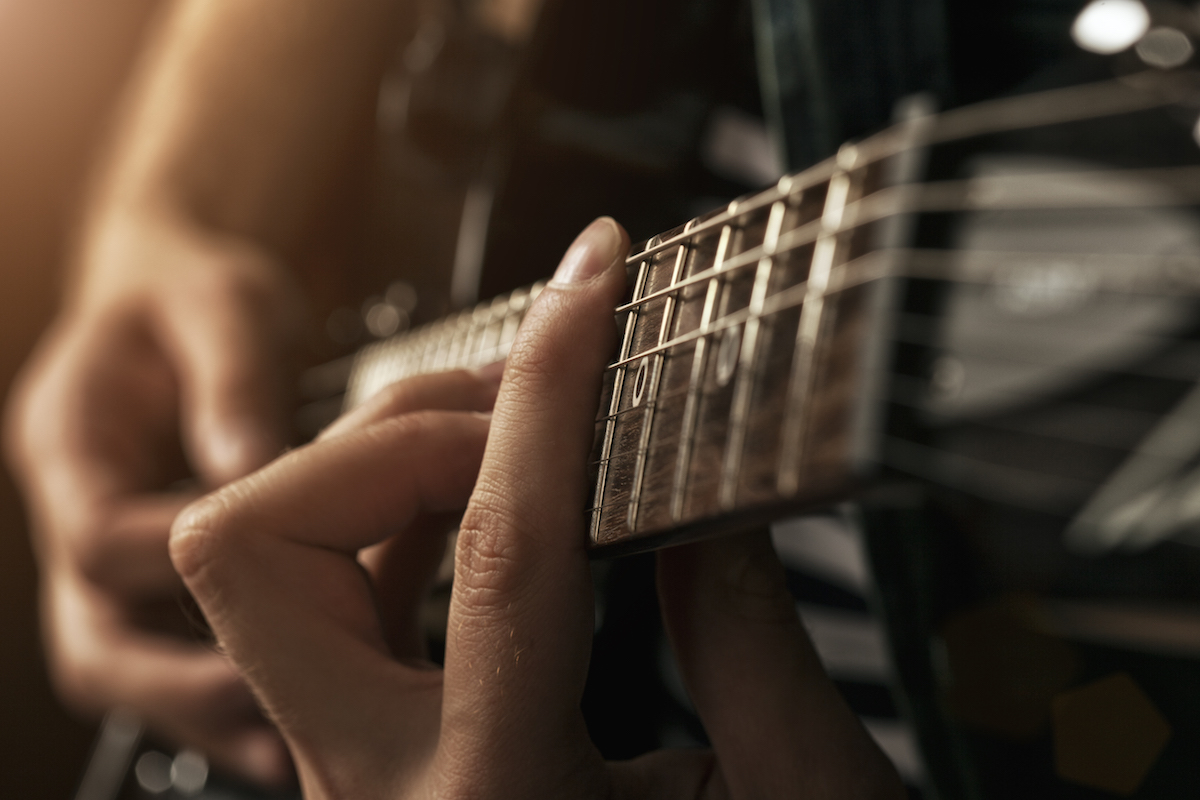
But deliberate practice says that, if you want to improve faster, notice where those problem spots are and instead of spending your time playing the song three times, play the song once. Find those trouble spots and spend the rest of your practice session just working on those. And tomorrow you’ll probably find you’re three times as good as if you’d just played through the whole song a few times.
So deliberate practice is about that exact discomfort factor that you mentioned. It’s about that willingness to push yourself into situations that aren’t that much fun. But you’ve identified them as the situations that will help you grow as a musician.
Q: That’s so cool. And it’s actually really interesting having this conversation because it’s occurred to me that a lot of the work that I’m doing on marketing strategy with artists, regardless of the stage that they’re at, whether it’s early days on or they’re on a release cycle – we’re actually doing similar things, which I hadn’t really thought of.
I always want to hone in on the stuff that’s almost like the little knot, the bit that’s keeping them stuck and we focus on that. We unlock that piece and then the next piece of the marketing strategy, whatever’s going on. Often it’s time management, often it’s working out the plan. You start to unlock some of those pieces and then everything starts to fit … and everything else that was feeling really overwhelming starts feeling easier. Really interesting just to realize there that (the business side) is the same really, very similar process to learning or improving on your instrument.
Absolutely it is and it’s the kind of thing where if you’re 20% good at most of the song and then there are a few problem spots, your average ability is going to go way down because those problem spots are dragging down the overall quality. You can try and bring everything up a notch by playing the song again and again, and you gradually get better at everything – but actually, if you just knock out those problem spots, your average jumps up dramatically because you’ve got rid of those things that are really dragging you down.
And that’s why deliberate practice and the deliberate approach to learning marketing or teaching everything that you mention is so effective. It finds those points of leverage that are really holding you back, the bottlenecks, and it says, “Let’s just crush those, and then everything else will be easier.”

Tipping the Scales
We love music, we’re passionate about it. Music is where we want to spend our time. And it’s easy to want to put our time and attention on the music side of life – until we get hungry.
But music and business are not opposites. In fact, we build many skills in the course of music practice that are transferable to any place we want to produce success in life. When we practice music, we learn to effectively manage time, mental attitudes, what we put our attention on, and overcoming our own resistance to change and growth. These skills, in turn, will serve us in whatever we want to accomplish in life.
So be honest with yourself: what have you really learned from music, and how will you apply that learning today to move forward on all fronts?
The post Musical U Meets Music Launch Hub, Part 1: Practicing Music, Practicing Business appeared first on Musical U.
The Ultimate Guide to the Circle of Fifths
The Circle of Fifths is a mystery to many. But what if you found everything you ever needed to know and learn about musical pitch (every note, scale, chord, progressions, etc.) in a simple diagram that could fit in the palm of your hand?
The Circle of Fifths is that magical musical master tool.
This learning device has endured for hundreds of years since its invention, and for good reason; there’s no need to reinvent the wheel. Or, apparently, any other circular entity.
“But is it for me?”, you may ask.
Though the Circle of Fifths is most commonly understood as a component of classical music theory, it’s certainly not only for the hallowed halls of the conservatory. It’s a valuable tool for any musician of any musical background.
Our guide is the Circle of Fifths made easy – very little prior musical knowledge is required, but by the end of this article, you’ll not only understand the mechanics behind the circle, but also how to apply it in music theory, transposition, singing, songwriting, and more.
This incredibly powerful tool will take you far beyond simply understanding music theory – it will help you write music, predict chords in a progression, and understand relationships between major and minor keys. It will serve you well, regardless of whether you are a classical violinist, jazz saxophone player, a bassist in a rock band, or aspiring DJ.
So fasten your seatbelt: we’re diving deep into this infinite pool of musical wisdom. As you will soon see, the magical mojo of this Ring of Power surpasses even Tolkien’s imagination!
Table of Contents
So, here it is, the Circle of Fifths explained, in easy-to-understand bite-sized pieces!
2. Let’s Start With Some Theory…
3. Building Your Own Perfection
4. Introducing the Circle of Fifths
5. Modes and the Circle of Fifths
6. How to Use the Circle of Fifths
7. The Key That Unlocks the World of Western Music
The Circle’s Beginnings
So, how was the Circle of Fifths invented, and who is responsible for the discovery of this musical godsend?
Russian composer and music theorist Nikolay Diletsky set this whole wheel rolling in the late 1670’s. He intended his book Grammatika as a guide to composition, but with the rules of music theory in mind:

Diletsky’s Circle of Fifths
Since then, it has been expanded and improved-upon to yield the comprehensive circular diagram we have today.
Let’s Start With Some Theory…
Before we dive into the mechanics of the circle, let’s first understand some key concepts. Bear with us – this basic music theory will be a huge help in making sense of the circle.
Each “station” on the circle represents a note, a chord, and a key.
The Keys to What?
Let’s begin by answering the question: What’s a key?
In music, we define a key as the “tonal center” of a piece of music. The melody and harmony will revolve around this tonal center, which is simply a single note. This single note is also given the name of the tonic, and is given the scale degree designation “I”.
It is on this tonic that we build the scale or the eight-note sequence that is used to compose melodies and harmonies in the key of the tonic.

The most commonly-encountered types of scales in Western music are called “major” and “minor”. To retain the characteristic major or minor sound, scales in most keys require accidentals – sharps and flats that will give the scale the desired sound.
Each key will have its unique pattern of sharps and flats. However, if you examine the distances (known as “intervals”) between the notes of, say, every major scale and compare them, you will see that the interval pattern is exactly the same in all major scales (this holds true for minor scales as well, though they will have a different pattern from major).

→Learn more about intervals.
Sidebar: What’s a Fifth?
One of these “shared” intervals will be a fifth (also known as a perfect fifth).
So what’s so perfect about a fifth?
Perfect intervals vibrate in pure mathematical ratios. For example, this note (A) is vibrating at 440 Hz (cycles per second):
And this “A” is vibrating twice as fast, at 880 Hz:
We call this interval a “perfect octave”. Octaves relate to each other in some multiple of a 2:1 ratio. Octaves are so “perfect” that, when played together, the notes blend together until it’s difficult to tell one from the other:
The next smallest simple ratio is 3:2:
You can hear that the fifth also blends very well, and has a powerful, resonant sound (which is how the famous guitar “power chords” work.)
So when you put your finger on the 12th fret of a guitar, you’re splitting that string in half (2:1 ratio). To produce the fifth, divide the string into three parts (7th fret).
The perfect fifth interval is said to be consonant, meaning it is a typical “pleasant sound” and sounds stable within music. The fifth of a key can be found by finding the fifth degree of the scale of the key.

If you are familiar with tones and semitones, the fifth can be found by counting seven semitones up. Starting at the tonic, this is seven adjacent keys (this includes black keys!) on piano, or seven frets up on the guitar, bass, and ukulele.
Playing a fretless string instrument? Have no fear! The Circle of Fifths also applies to the violin and its immediate family of instruments.
The fifth shows up frequently in basslines of Western music, with root-fifth patterns being a popular choice for bassists. Why?
The perfect fifth interval sounds consonant and stable, thereby helping the bassist fulfill their role of “supporting” the song; the patterns of this interval sound great under guitar chords. Best of all, it’s a fairly straightforward pattern to memorize and it’s easy to play!
Build Your Own Perfection:
Now that you have a good idea of what a fifth is, it’s time to build your own circle! You can download this and extra Circle of Fifths worksheets to practice and teach everything we cover in this article in our free comprehensive Circle of Fifths Worksheets PDF:
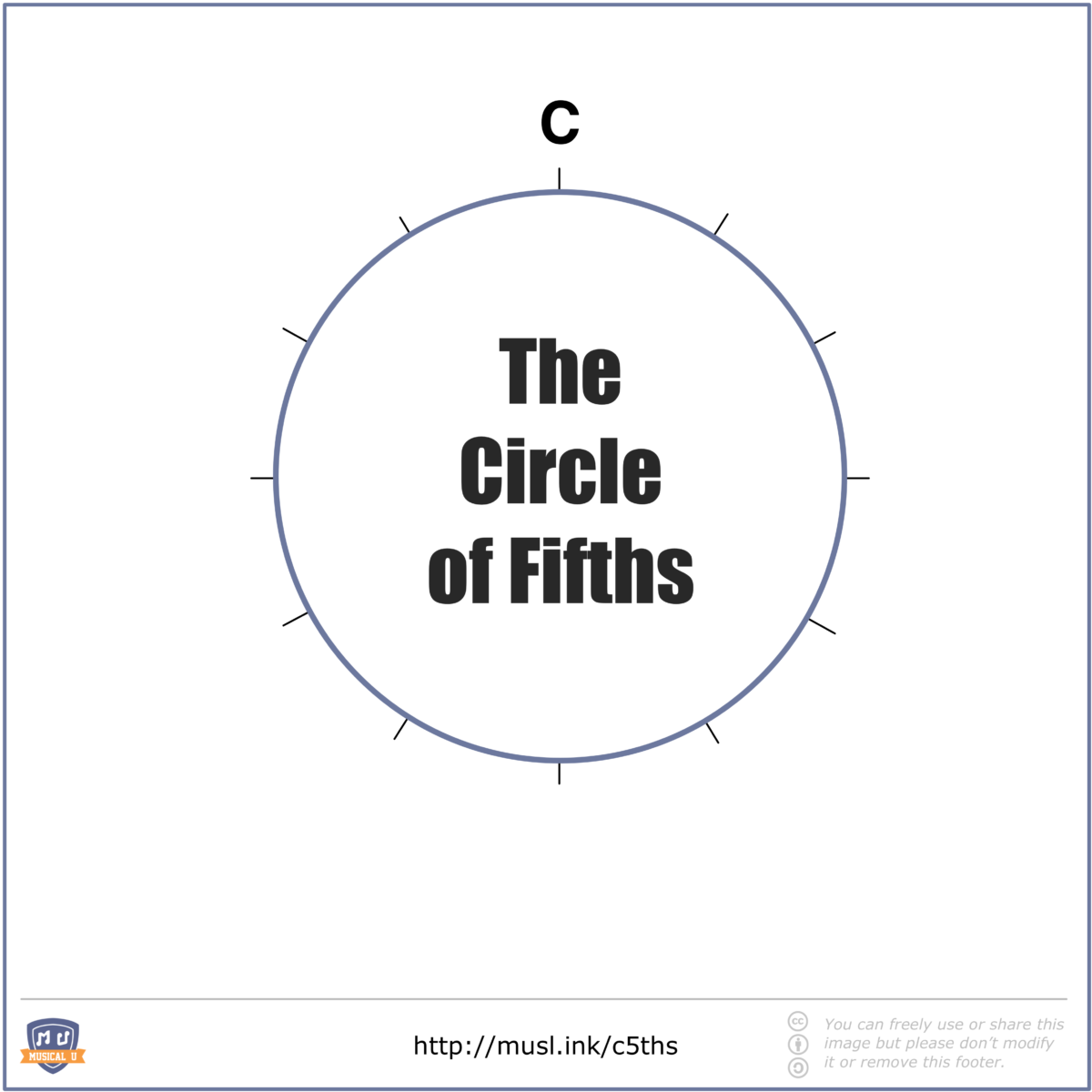
Now count up the C scale five notes:

Write the “G” in at one o’clock. G then becomes the new tonic. Make sure that you are adding in the appropriate sharps or flats for each new tonic center as you continue around the circle. If you’re fuzzy on your key signatures you can look them up, or count your fifths in half-steps (semitones) – remember, a perfect fifth = seven semitones.
If you’re really feeling stuck, follow along with a guide to help you figure out those intervals!
How did it come out? Check your work with the diagram below.
Introducing…The Circle of Fifths!
By definition, the Circle of Fifths is a visual tool designed to illustrate the relationships between the 12 tones of the chromatic scale – the foundation on which Western music is built. The name derives from the fact that going clockwise around the circle, each note is a fifth (a perfect fifth, to be exact) above the previous one in the circle.
The result? This unassuming circle shows how all the musical notes, keys, and chords relate to each other. Let’s explore how the circle is built, starting with the absolute basics…
The Bare Bones
Let’s first look at the most simple iteration of the circle:
Starting with the note of C at 12 o’clock and moving clockwise around the circle, each new note is a perfect fifth above the previous one. The whole Circle of Fifths progression is simply perfect fifths stacked on top of each other, eventually coming back to C from F.
More Than Just Notes
This is one of the many reasons that the Circle of Fifths is important: the letters around the circle aren’t just note names – they also represent the corresponding key of each note. Therefore, we are starting with the accidental-free key of C major at the top of the circle, and working our way around through keys with accidentals in them.
Figuring Out Key Signatures
Here’s the circle with the corresponding key signatures of each major key represented:
Imagine the Circle of Fifths as the keys on the piano twisted into a circle. Middle C is at the very top, where 12 on a clock would be. Why is it at the top? Because C major has no sharps or flats so it is almost like a “neutral” key.
While the diagram may initially appear overwhelming, fear not! The addition of sharps and flats not only follows a predictable pattern when going around the circle, but the direction you’re heading in tells you whether you’re adding sharps or flats. Remember: no key signature has both sharps and flats.
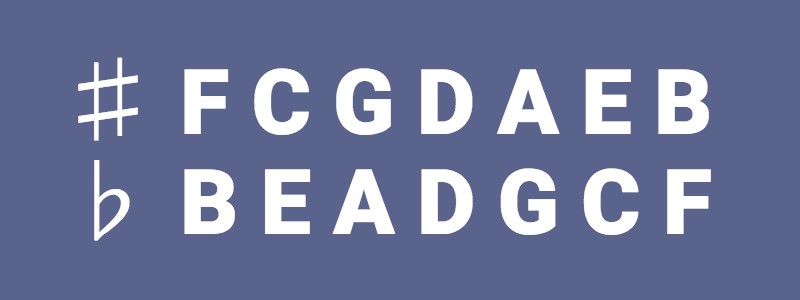 Head clockwise around the circle starting at C major. G major has one sharp (F♯), D major has two (F♯, C♯) and so on. Soon you’ll notice that new sharps are added in the order F-C-G-D-A-E-B. Head counterclockwise around the circle starting at C major, and you’ll see that flats are added in the reverse order: B-E-A-D-G-C-F.
Head clockwise around the circle starting at C major. G major has one sharp (F♯), D major has two (F♯, C♯) and so on. Soon you’ll notice that new sharps are added in the order F-C-G-D-A-E-B. Head counterclockwise around the circle starting at C major, and you’ll see that flats are added in the reverse order: B-E-A-D-G-C-F.
Making your life easier still: the number of steps you take around the circle tells you how many accidentals the key will have. If you’re trying to figure out the number of sharps B major has, count the five steps around the circle to determine that it will have five. The letter sequence will tell you that its sharps are F♯, C♯, G♯, D♯, and A♯.
If you want to memorize one thing about the Circle of Fifths, this sequence of letters should be it! A useful (and heartwarming) mnemonic for this Circle of Fifths pattern is “Father Christmas Gave Dad An Electric Blanket”. Come up with your own creative one in reverse for remembering the order of flats!
Understanding the key signature aspect of the circle may take some practice and figuring out your own methods of memorization. Check out this follow-along instructional video for a comprehensive explanation of key signatures.
Sidebar: Where Things Get A Bit Tricky…
The letter sequence F-C-G-D-A-E-B may end up confusing you if you look at the circle and realize that there’s no E♯ or B♯ anywhere on the key signatures of the circle.
And you’re absolutely right. E♯ would be F major and B♯ would be C major.
But remember, we’re counting sharps from G, so once we get to seven sharps (and every note is therefore sharpened), it actually becomes far easier to think of the scale in terms of flats, because there will be fewer accidentals!
This is where the concept of enharmonic equivalence comes in; C♯ major will be identical to D♭ major, and if you represent the pitches in the C♯ major scale (with every degree being sharpened) in terms of flats and naturals instead of sharps only, you get the five-flat key signature of D♭ major.
In our chart, G♯, D♯, and A♯ are included because they sometimes come up as useful chords (thanks mostly to guitarists, who tend to like sharps more than flats) – but E♯ and B♯ would be rare exotic beasts for any instrument.
What About Minor Keys?
So far, the circle we’ve presented to you has only contained major keys and their key signatures. The good news is, you don’t have to construct a second circle for the minor keys! You can fit them right into the circle by following the rules of relative minors:
A quick refresher: the relative minor of a key has the same key signature, and therefore all the same notes, as the major.
Here are two ways to quickly find the relative minor of a major key:
- Work out the major scale on paper or on your instrument. The relative minor tonic will be on the sixth degree of the scale. In terms of intervals, that’s a major sixth up or a minor third down.
- Using the Circle of Fifths, simply move three positions clockwise around the to find the relative minor! So, starting from C, count one (G), two (D) and then three: A is your relative minor.
If you’re paying really close attention, you’ll notice that the relative minors going clockwise around the circle are also a fifth apart!
The Circle is Complete
Aaaand there you have it! These components make up the full Circle of Fifths. We know that it’s a lot to take in for the newly initiated, so if you’re overwhelmed, don’t panic: try working with an interactive Circle of Fifths to look at a key-by-key breakdown of the diagram!
Also Known As…
The reason for calling it the Circle of Fifths should be fairly obvious by now: adjacent keys of both the major and minor quality are separated by an interval of a perfect fifth.
However, there is another way to think about all this.
You may have heard of something in music called the Circle (or “Cycle”) of Fourths. Good news: Circle of Fourths and the Circle of Fifths are not two separate concepts, but two different names for the exact same thing!
The Circle of Fifths can, alternatively, be named the Circle of Fourths because if you decide to go counterclockwise around the circle, each note is a fourth above the previous one.
Both names are equally “right”, and you’ll find that both are used in reference to the circle.
Modes and Circle of Fifths
Before we jump into the numerous uses of the Circle of Fifths, let’s check out how it relates to musical modes. For the uninitiated or for those wanting a refresher, check out our introduction to modal improvisation.
If you squish any seven adjacent notes in the Circle down to a scale, you wind up with the Lydian mode, rather than the major scale:

Compared with the major scale, the Lydian mode is distinctive in its floaty, perpetually unresolved demeanor. Its notes give it an almost magical quality.
Keep going, and you get a full chromatic scale.
Jazz theorist George Russell built his Lydian Chromatic concept on this quality of the Circle of Fifths – which he called “The Circle of Close to Distant Relationships”. Keep messing with the Circle and you’ll figure out that all the various modes can be derived.
How to Use the Circle of Fifths
Now that you know how the Circle of Fifths works, you must be wondering how you can apply the Circle of Fifths. This section really could be a full novel in itself. There are limitless uses of the circle. Some are self-evident, and simply require taking a close look at the circle, while others venture into territory of complicated harmony and all sorts of mental gymnastics regarding keys and key signatures.
If fact, once you see just how useful it is, you may have the inspiration for your next tattoo! If you’re not really that committed, you can always try a temporary circle of fifths tattoo or guitar vinyl stick on.
Here are a few of the more basic and useful applications of the circle.
Using the Circle of Fifths to find Key Signatures
Let’s work through an example of how to find a key signature. Say you are learning a song that is in F major and you want to know which sharps or flats to use. As you can see from above, the Circle of Fifths has the answer!
While reading through, keep in mind the F-C-G-D-A-E-B sequence we introduced earlier and that it shows the order in which sharps (and when spelled in reverse, flats) are added to keys around the circle.
In order to work out how many sharps or flats are in F major, we need to find it by moving round the Circle of Fifths. Remember we always start at C. If we were to head round clockwise once, we would land on G. This has one sharp in its scale, and if you consult the F-C-G-D-A-E-B sequence, you’ll know it’s F♯. If we head round once more, we would land on D, with the two sharps of F♯ and C♯. So far F is not coming up, which is what we need.
Let’s try moving the other way. Go back to C, then move counterclockwise once. A perfect fifth below C is F. This is what we’re looking for! Because we’ve moved round counterclockwise once to land on F, F has one flat. Recall the F-C-G-D-A-E-B sequence backwards (because we’re now talking about flats, not sharps), and you’ll see that F major’s key signature consists of Bb.
This isn’t just the pattern of notes around the circle of fifths. It is also the order in which sharps are added to each successive key when going around the circle clockwise.
Need to memorize the order of flats? Easy! Just take that seven-letter sequence and spell it backward, getting B-E-A-D-G-C-F. This gives you the order in which flats are added to each successive key when going around the circle counterclockwise!
Using the Circle of Fifths to Build Scales
Now that you know how to easily find the key signature of any key using the circle, figuring out the full scale is easy. You know the tonic you want to start from. Each successive note could be natural (accidental-free), sharpened, or flattened. The key signature will tell you the sharps or flats of the scale, and each other note will simply be natural.
Easy!
Read scales right off the Circle
Here’s a dirty little secret: you don’t even have to know the key signature (though you’ll want to!). To read any major scale, count seven notes clockwise, beginning from the note immediately counterclockwise in the circle (otherwise you’ll find the Lydian mode). Reduce them down to a scale order and there you have it:

Ethan Hein has more on reading scales off the circle.
Using the Circle of Fifths to Build Chords
Chords are simply clusters of notes played together for a sound that is consonant, or pleasant to listen to. They come in multiple flavours: major, minor, augmented, diminished, seventh, etc…
For the purposes of this guide, we’ll zero in on some common chords that our beloved circle can help you build within minutes; this section will be particularly useful to the guitarists in the house.
Major and Minor Chords
A major chord consists of three notes: the tonic, a major third above the tonic, and a perfect fifth above the tonic. The major third interval is found simply by counting up four semitones (or two whole tones) from the tonic. As for the fifth, simply travel clockwise around the circle by one step to find the third note of your triad!
This C major chord is fairly easy to find and play on most instruments. For example, seeing as the “blow” notes of the first three holes on the harmonica are C, E, and G, respectively, you can play a C major chord by blowing into the first three holes on the instrument.
You can rotate this shape around the circle and instantly find any major chord:
A minor chord is the same, save for a minor third above the tonic instead of a major third. Find the fifth in the same way as above, and count up three semitones from the tonic to determine your third.
Try this one yourself – draw a C minor triad in the circle.
Show answer
How did you do?
Dominant Seventh Chords
These chords show up a lot in all kinds of music. The dominant seventh chord simply consists of a major triad with a minor seventh stacked on top.
Dominant sevenths are four note chords, leaving you three notes that you have to figure out above the tonic. You already know how to find two of these – use the same rule as described above, keeping in mind that dominant seventh chords will contain a major third.
As for finding the seventh, the circle can help you out once again. Simply count two steps counterclockwise from the key in which you’re building the chord to give you the seventh.
Give it a try: build a dominant seventh chord in F♯.
Show answer
In fact, it’s possible to build a Circle of Fifths made up of dominant seventh chords! Jazz music commonly has sequences of dominant seventh chords whose tonics are separated by fifths. Jazz saxophonists: try playing your way around the circle by starting with a C dominant seventh chord and progressing up by fifths, building new dominant seventh chords on top of each new tonic.
Now, try building the Major Seventh Chord shape. Here’s a hint: replace the minor seventh interval with a major seventh!
Using the Circle of Fifths to Play Chord Progressions By Ear
Some chord progressions are a lot more popular than others, and certain chords within a key are also more important than others. Chord II is the most important, but chords IV and V are also very popular, since they are so closely related to I.
Our handy Circle of Fifths also show us the relationships between these chords. The closer they are in the circle, the more closely they are related (Remember George Russell’s Circle of Close to Distant Relationships?).
So it’s easy to find out chords IV and V of any key: just pick any letter around the circle and treat that as I. The letter to the left is IV, and the letter to the right is V. So chord IV of C is F, and chord V is G.
Any other roman numeral chord will have its own relationship in the circle, so once you work out that relationship, you can always use it to find that chord for a given key.
For example, another important chord is vi. The reason for this is because I, IV, V and vi are used in a lot of four-chord progressions. One common chord progression is I, vi, IIV, V which can be heard in literally hundreds of famous songs. Another is IV, V, vi, IV – in fact the Axis of Awesome even exploit this in their infamous sketch:
The Circle of Fifths for Songwriters
The circle contains plenty of tricks to make your life easier when writing music. When you get good enough at using the Circle of Fifths to identify chord progressions, you can start predicting what comes next and if you’re writing songs you will know which chords will work well together.
Chords that are close together on the circle are closely related, and tend to flow with each other. If you look closely at key signature patterns in the circle, you can see why this is.
Two keys that are adjacent to each other in the circle have six out of seven notes in their scales in common!
Therefore, using keys and chords contained to one side of the circle will help you craft melodies with consonance, or songs that are euphonic and pleasing to the ear.
In fact, that’s why the I – IV – V chord progression sounds so familiar and satisfying; look on the circle, and you’ll see that these three scale degrees appear clustered together on a side of the circle, with V found immediately to the right of the tonic, and IV immediately to the left.
Finding Your Way Home
Obviously, building a song using fifths will sound pleasant and “natural” – but you can’t do this forever!
Try this: compose a melody that ascends by fifths for a while. Then, jump across the circle to a key that doesn’t have that much note overlap with the melody you just wrote, but that you like the sound of. From this key, find your way back to the tonic any way you’d like; perhaps by continuing clockwise around the circle until you circle back to the starting note! You can “exit” the Circle of Fifths anytime you want, and find your way back in.
Crossing the Circle
However, this doesn’t at all mean you should stick to one side of the circle. Sometimes, you don’t want an easy, pleasant sound. Try experimenting with creating tension and dissonant progressions by leaping across the circle.
Using combinations of more distant chords tends to produce a more pronounced musical shift. There are parts in the song where this can be exploited for impact, such as in the bridge. You can use these principles to create innovative chord progressions that reflect the emotion in your lyrics.
Beyond Major…
Lastly, remember that the Circle of Fifths reveals there’s a world of modes and rich harmonic possibilities beyond the obvious major keys lining the circle!
If you play with the Circle of Fifths enough, you’ll find a place for any number of chords beyond the usual major triads.
Change a chord from major to minor to give a bittersweet quality to the progression. Add a seventh to another chord to highlight a point of change in your song. Exploring the relationships of various minor, seventh, and extended chords within the Circle of Fifths will add much more depth to your songwriting
The Key that Unlocks the World of Western Music
 Whew! That was a lot of Circle Lore to digest! Thinking you’ll need some more time with the Circle of Fifths? Try the Circle of Clock.
Whew! That was a lot of Circle Lore to digest! Thinking you’ll need some more time with the Circle of Fifths? Try the Circle of Clock.
You can also download a free PDF all the Circle of Fifths diagrams from this post.
Once you get the hang of the basics of the circle and understand the way the key signatures and relative minors work, there’s no limit to its uses. On-the-fly transposition and transcription, harmony writing, and sophisticated songwriting are only some of the faculties that await the musician that spends some time familiarizing themselves with the Circle of Fifths.
Start today, and start small: work out how to find the key signatures and relative minors, and see how quickly you can progress to drawing the circle by memory, just by recognizing its patterns. The more often you use it, the more fluent you will become, and soon you’ll start seeing more and more patterns within the circle!
The post The Ultimate Guide to the Circle of Fifths appeared first on Musical U.
Stefan Hall taught himself how to play guitar by ear. Now…
https://www.musical-u.com/learn/play-along-with-stefan-hall/
Stefan Hall taught himself how to play guitar by ear. Now he has a thriving career as a performer and a university instructor. We asked Dave to go into greater depth on his play along by ear method of learning and teaching jazz. https://www.musical-u.com/learn/play-along-with-stefan-hall/
Singing: Audiation (Resource Pack Preview)
New musicality video:
Audiation may be a strange and unfamiliar word, but it means something you probably do every day: hear music in your head.
https://www.musical-u.com/learn/audiation-and-singing-resource-pack-preview/
Learning to harness this skill and develop it can benefit you in a wide variety of ways on your instrument. Taken a step further, learning to sing what you hear or audiate creates a valuable bridge between your mind’s ear and what you play.
Audiation is essential for singers in a number of ways, as Resident Pro for singing Clare Wheeler explains.
Including:
– Audiation lets you bring theory to life, judge and match pitch, stay in tune, and harmonise by ear.
– How audiation can be the difference between an amateur and a professional choir starting a piece.
– One simple exercise and a valuable insight to practice matching pitch dead-on, first time.
– How to stay in key and not drift during a piece.
– The usefulness of memorising a single reference pitch.
– How to start learning to harmonise by ear when singing
As musicians and music lovers we all audiate in one way or another, even if it’s just when an annoying song gets stuck in our head! Clare shows how even this is an opportunity to improve as a singer, and the myriad other ways audiation can transform your accuracy, confidence and creativity when singing.
https://www.musical-u.com/learn/audiation-and-singing-resource-pack-preview/
===============================================
Learn more about Musical U!
Website:
https://www.musical-u.com/
Tone Deaf Test:
http://tonedeaftest.com/
Musicality Checklist:
https://www.musical-u.com/mcl-musicality-checklist
Facebook:
https://www.facebook.com/MusicalU
Twitter:
Tweets by MusicalU
YouTube:
https://www.youtube.com/c/MusicalU
Subscribe for more videos from Musical U!
Want to learn more about EDM? Whether you’re an avid list…
https://www.musical-u.com/learn/introduction-edm/
Want to learn more about EDM? Whether you’re an avid listener or someone who’s just beginning to wonder what it is, EDM is a fascinating style of music. The catchy rhythms and complimenting sound additions make it both incredibly danceable and fun to listen to. https://www.musical-u.com/learn/introduction-edm/
Discover Your Unexpected Music Career, with Dave Ruch
We musicians like to think we’re free. After all, we spend much of our time creating amazing and beautiful sounds. But even in what feels like a creative flow, we can fall into the trap of tunnel vision that shuts down the perception of the marvelous musical opportunities that surround us.
Case in point: Dave Ruch was not always a full-time musician and performer. When he did go back to music, it was the usual bar-and-club scene. But then he stumbled into new audiences for old music – transforming his career.
Now Dave – whose work has been featured on American Public Media, in Emmy Award-winning documentaries, and on stages across North America and the U.K. – is a teaching artist and Public Scholar for the New York Council for the Humanities, who helps audiences of all ages connect with history and culture through music.
Dave reaches out to others who are searching for those “under the radar” gigs through his marketing blog “Educate and Entertain: A Great Living in the Arts,” and he also writes for The Huffington Post, CD Baby and Sonicbids blogs.
Q: Greetings Dave! Thank you so much for joining us here on Musical U. How did you begin in music? What were your early musical inspirations?
I started playing guitar in earnest at age 15 after a failed attempt at some lessons when I was 12 (and an equally unsatisfying fourth-grade year with a trombone!). In my teenage years, I was really interested in Led Zeppelin and Jimi Hendrix, alongside the softer acoustic rock of artists like Neil Young and America. I discovered The Grateful Dead after that, along with all kinds of related American music forms (blues, jazz, bluegrass and traditional music), and it’s been getting more obscure ever since!
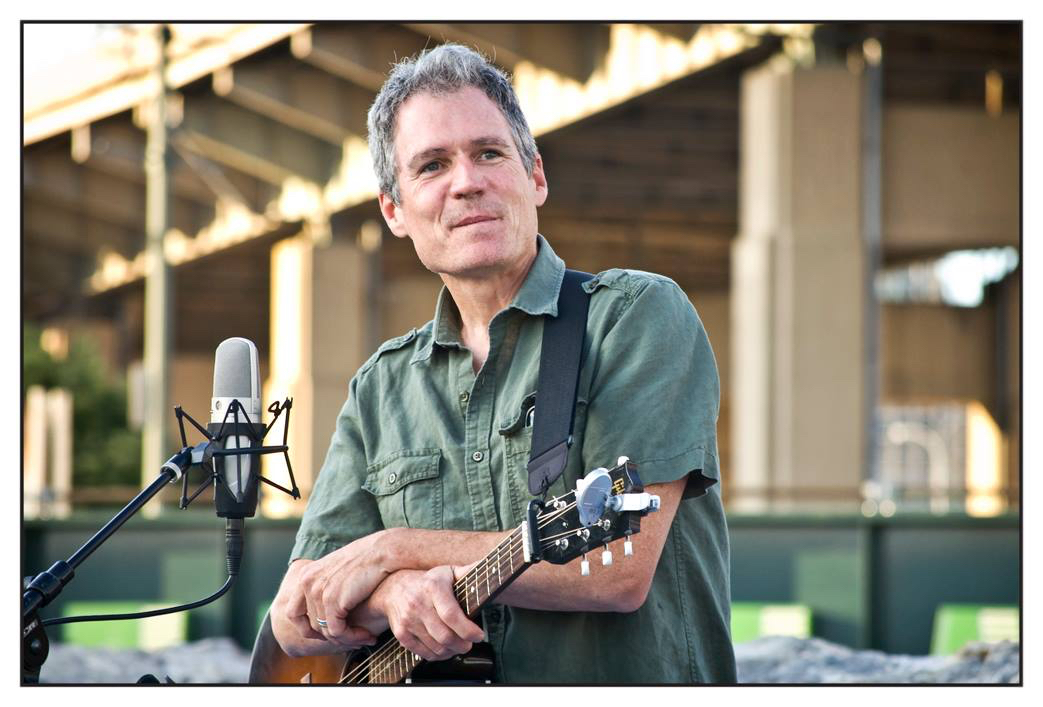
Dave Ruch, photo by Greg Meadows
Q: I’ve had a similar journey, working my way back to the roots. And now you’ve made a career of it. Dave, there are so many after-work musicians that dream of a musical career. How did you move from being a hobbyist to a professional musician?
I had a bit of a crisis in my late 20’s after working a corporate job for about six years and never feeling like I fit in there. I quit my job not knowing what I was going to do with myself, but certain that white collar life was not for me. I had, up until that point, ruled out a career in music – mostly for all the obvious reasons – but reached this point where it was the only thing that made sense to me. So, at age 27, I went for it.
Q: Always a big step! I know you didn’t start out this way, so how did you begin working as an educational performer?
I’ll never forget my first performance for a group of school kids.
It was January 1995, and at the time I was what you would call a “gigging musician.”
I stumbled my way into this career by simply making myself available and watching what was going on around me and following the path towards better-paying work that also satisfied me.
My normal routine back then involved rolling out of bed sometime between 9:00 am and Noon (depending on how late the night before had been), perhaps teaching a few guitar students during the day, and then playing out that night in a bar where the band might start at 11:00 pm. Or 11:30pm. (Famously, the bars in Buffalo NY where I live stay open until 4:00 am, so everything tends to start a bit later…)
I had received a call from a musician friend who said “Hey, we’ve got this trio called The Hill Brothers that goes into schools doing Erie Canal music (what?) and we just lost our third member. Do you want to do a few gigs with us?”
Needless to say, I had no idea what Erie Canal music was, and even less of a clue about performing in schools, for kids.
Me: “Um…sure. What time’s the gig?”
Him: “8:30am. You’ll be home by 10.”
Me: (long pause…..)
Did he say 8:30am, as in 8:30 in the morning?
Q: So how did that first school gig go?
I boned up on the material quick – there were about seven songs to learn, and some speaking lines too.
(What? I need to actually say things to the audience?)
We arrived at about 7:30 am and loaded into that brightly-lit Catholic School “gymatorium”, and I just had no idea what was about to happen.
We set up the PA system, rehearsed a few things, I took some time to go over my speaking parts in my head.
And then, the kids – all 250 of them – began filing in to that large, boomy, uninviting room.
Big kids, little kids, loud kids.

I think it must have been every grade level from Kindergarten to 8th. Quite a span of ages.
They took their seats on the floor in a somewhat orderly fashion as the principal made her way to the stage to greet us and, ultimately, introduce the show.
Off we went….
That first show was definitely a blur. The songs were new to me, the comedy and schtick and scripted nature of the show were completely foreign, and I learned a whole lot real quick about how not to talk to a room full of kids (i.e. don’t do what I did).
But when I came out on the other side of that performance, I was left with a very definite feeling.
I loved it! I absolutely loved it.
The kids had so much fun. They were wide open and eager for more. They laughed. They moved on cue. They might have even learned something!
And the best part?
They didn’t need a single beer before they warmed up to us.
I pretty much decided then and there that I wanted to be doing a whole lot more of this, and because of some issues I’d been experiencing with tendonitis, it was also a very logical career move to start pursuing 45-minute gigs that pay really well and don’t involve tearing my arm apart from overplaying.
From that moment forward, I made it my goal to figure out how to work in schools as much as possible. I’ve spent twenty-plus years doing exactly that.
It was worth it.
The hours are hard to beat, the work feels really meaningful, and I’ve been able to make a great living doing it.
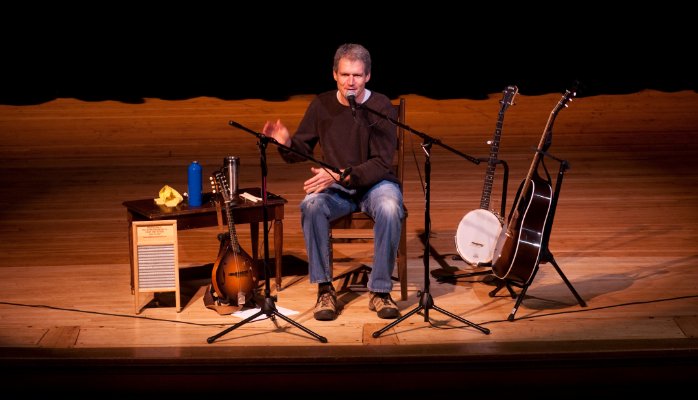
Q: Fantastic! Most of your performances involve history in some shape or form. I especially enjoyed your recent appearance on CBS News singing about the Erie Canal. How did you become interested in historical music?
You know, that really was a byproduct of performing in schools. The first few shows I learned to perform with The Hill Brothers were history-based (Appalachian Music, and songs from New York State’s history), and that reignited my interest in American history and connecting it with the music of our past.
Q: What are some examples of your own favorite historical songs?
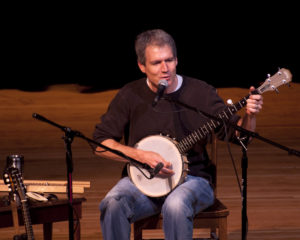 There are songs that talk about or “teach” history, and then there are songs that just are history in that they sustained people during a time before they had radios. It’s that second category of historical (or, traditional) music that I really love.
There are songs that talk about or “teach” history, and then there are songs that just are history in that they sustained people during a time before they had radios. It’s that second category of historical (or, traditional) music that I really love.
The music and the inflections were a bit different from place to place and culture to culture, yet some of it can be traced back to common roots in the British Isles, and then, of course, the African peoples arrive here in North America and add their sensibilities to it – that’s when American music really gets interesting for me.
Q: What skills are helpful to develop for the educational performer?
Number one would be how to hold and engage an audience of kids at various different ages. What works for Kindergarteners is entirely different from what works for 8th graders, and so on.
Once you’ve cracked that code (which really can only be done through trial and error, although there are certainly best practices one can learn), the name of the game is to connect what it is they are already learning about in school with your music in a way that makes you an indispensable tool for the teachers and they want to hire you over and over again. You’re the sugar that makes the medicine go down!
For those of you who are interested, I’ve produced a very comprehensive two-hour webinar guiding people through the process of developing an educational program and marketing it to schools.
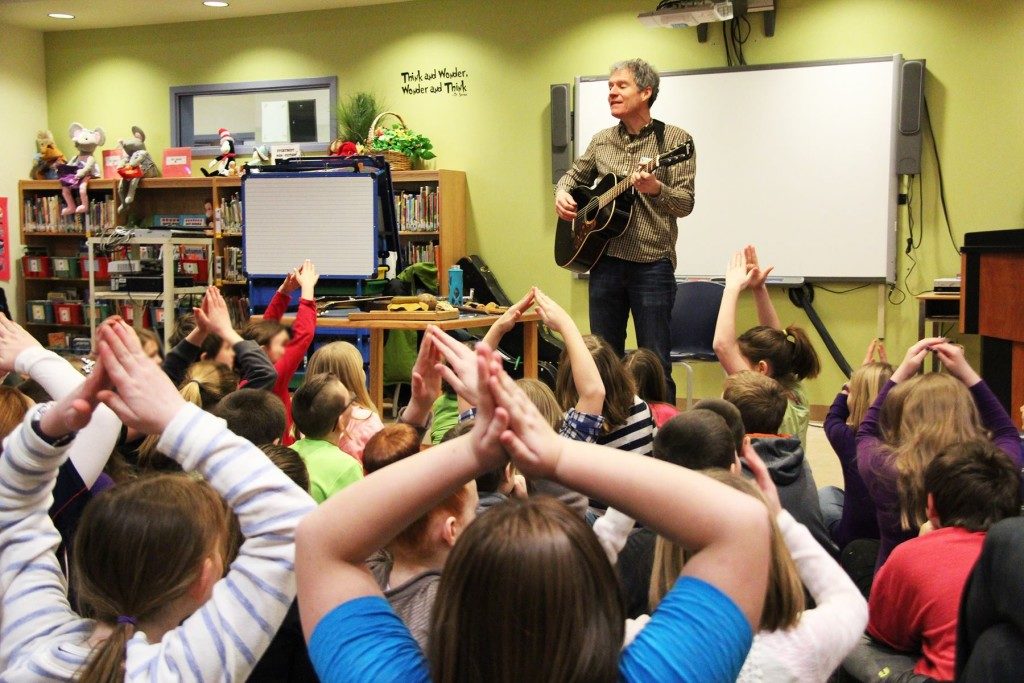
Q: In your work, you have uncovered hidden gig opportunities, and showed others how to do the same. What are these “under-the-radar” gigs?
For me, that means venues outside of the usual clubs, bars, restaurants, and coffeehouses that most local and regional musicians cut their teeth in. There is a great living to be made playing music in non-traditional settings such as schools, libraries, historical societies, museums and other venues with outside sources of funding, listening audience, and guaranteed paychecks.
I’ve now written over 50 articles on the Educate and Entertain blog to help other musicians find these kinds of gigs.
Q: I confess I’m hooked! Recently after enjoying a school performance with my wife, I became one of your subscribers. What an experience, watching the children skipping down the halls singing the Native American songs we taught them! By the time we left that day, we were rock stars. What advice can you share about finding and booking “under-the-radar” gigs?
The best advice I can give is to take control of your own booking and develop a massive database of contacts you can reach out to throughout the year for bookings. I send thousands of emails every month to people who book shows in schools and libraries and music festivals, and that’s exactly how I keep my calendar full.
It’s a long, slow process to find and hand-pick the right people and get them into your email database, but it’s exactly how I’ve done it. It all started with one name and one email address!
Q: Sometimes the hardest part of a musical career is tearing oneself away from the practice room or the stage and learning the business skills. What are some of the off-stage duties and skills you have developed that move your musical career forward?
Ha! I wrote an article precisely answering that question. It’s called “What Do You Do When You’re not Performing?” Since most of the hours in our day are spent off the stage, how we choose to use that time is critical to our success.
Q: Of course, the opportunity to make more music is why we do it! Please tell us about one or two of your favorite experiences as an educational performer.
Wow – there really are too many to mention. In terms of working with kids, it always really fires me up when a teacher tells me that she’s never seen “Johnny” so engaged in learning – that he usually sits in the corner and doesn’t participate in anything. Music really is the universal language and gives kids a whole different way “in” to the learning.
As far as doing performances for adults, there have been so many fortunate things that have come out of my interest in historical and traditional music – a concert tour in England, an Emmy-winning documentary I was featured in, an ongoing stint as a “Public Scholar” for the NY Council for the Humanities.
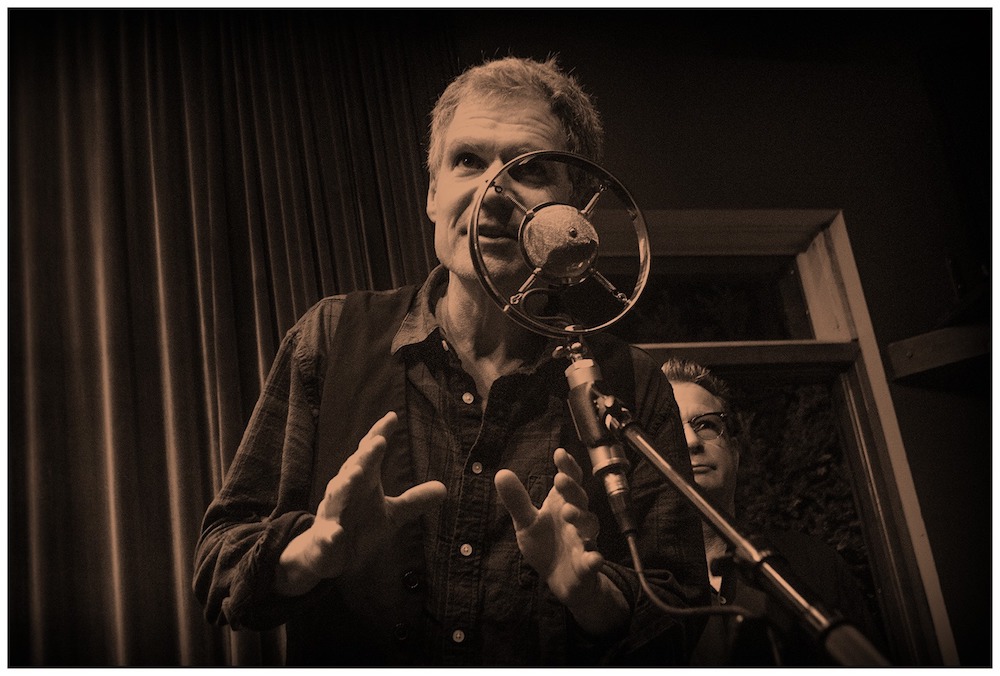
Q: Wonderful, Dave. What further advice you have for musicians who are interested in following in your footsteps?
Hmm… don’t follow mine – follow yours! I stumbled my way into this career by simply making myself available and watching what was going on around me and following the path towards better-paying work that also satisfied me.
I think the very most important thing is to really treat it like a business. Like it or not, when you decide to do music full time, you are now a small business and an entrepreneur and it’s entirely up to you to make this thing viable. On days when I am not performing, I spend a full eight hours in my office cultivating more work. It’s just the mindset that I’ve needed to put in place in order to make this work.
In my one-on-one coaching sessions with musicians, I find this piece to be the one that usually needs immediate tweaking before we can talk about the strategy for getting more and better gigs.
Yes, Dave. We musicians are more than willing to put that kind of commitment into creating and making music. It’s a matter of transferring that kind of commitment to the business side of things. Thank you so much for being here with us today!
So much opportunity surrounds us when we open our eyes and ears to what’s out there! Dave Ruch chose music and found himself in an unexpected – and lucrative – career that he loves. Whatever your aspirations, stay open to discovery – of gigs, business opportunities, music… and yourself!
The post Discover Your Unexpected Music Career, with Dave Ruch appeared first on Musical U.
Still hesitating on scheduling that audition? In How to P…
https://www.musical-u.com/learn/prepare-big-audition-part-2/
Still hesitating on scheduling that audition? In How to Prepare for the Big Audition, Part 1, we discovered that there are four factors that multiply together to build your own personal X-factor: https://www.musical-u.com/learn/prepare-big-audition-part-2/

